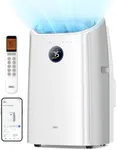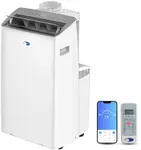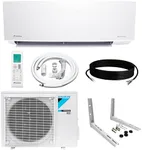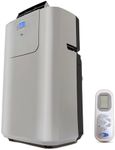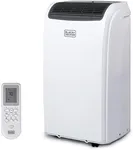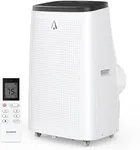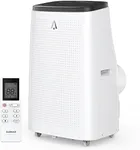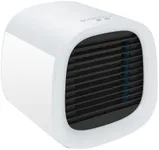Buying Guide for the Best Non Window Ac Units
When choosing a non-window air conditioning unit, it's important to consider several key specifications to ensure you select the best fit for your needs. Non-window AC units, such as portable air conditioners and split systems, offer flexibility and can be used in various settings. Understanding the key specs will help you make an informed decision and ensure you get the most efficient and effective cooling solution for your space.Cooling Capacity (BTU)Cooling capacity, measured in British Thermal Units (BTU), indicates how much heat the unit can remove from a room per hour. This spec is crucial because it determines the size of the area the unit can effectively cool. Units with lower BTU ratings (5,000-8,000 BTU) are suitable for small rooms up to 300 square feet, while medium-sized rooms (300-500 square feet) require units with 8,000-12,000 BTU. Larger spaces (500-800 square feet) need units with 12,000-18,000 BTU. To pick the right one, consider the size of the room you need to cool and choose a unit with an appropriate BTU rating to ensure efficient cooling.
Energy Efficiency Ratio (EER)The Energy Efficiency Ratio (EER) measures the unit's cooling efficiency by comparing the BTU rating to the power consumption in watts. A higher EER indicates a more energy-efficient unit, which can save you money on electricity bills. EER values typically range from 8 to 12. For better energy savings, look for units with an EER of 10 or higher. If you plan to use the AC frequently, investing in a unit with a higher EER can be beneficial in the long run.
Noise LevelNoise level, measured in decibels (dB), indicates how loud the unit will be during operation. This is important if you plan to use the AC in a bedroom, office, or any other space where quiet is essential. Units with noise levels below 50 dB are considered quiet and suitable for such environments. For living rooms or areas where noise is less of a concern, units with noise levels up to 60 dB may be acceptable. Choose a unit with a noise level that matches your comfort preferences and the intended use of the space.
PortabilityPortability refers to how easily the unit can be moved from one location to another. This is particularly important for portable air conditioners. Features like caster wheels, handles, and compact design enhance portability. If you need to cool different rooms at different times, a highly portable unit will be more convenient. Consider your mobility needs and choose a unit that offers the right balance of portability and performance.
Installation and MaintenanceInstallation and maintenance requirements vary between different types of non-window AC units. Portable units typically require minimal installation, often just a venting kit for the exhaust hose. Split systems require professional installation but offer more permanent and efficient cooling solutions. Maintenance includes tasks like cleaning or replacing filters and checking for any blockages in the vents. Consider how much effort you're willing to put into installation and maintenance when choosing a unit. If you prefer a hassle-free setup, a portable unit might be the best choice. For long-term use and better efficiency, a split system could be more suitable.
Additional FeaturesAdditional features can enhance the functionality and convenience of your AC unit. Features like remote control, programmable timers, sleep mode, and dehumidification can make the unit more user-friendly and versatile. Some units also come with smart capabilities, allowing you to control them via smartphone apps. Think about which features are important to you and how they can improve your overall experience with the AC unit. Choose a model that offers the features that best match your lifestyle and preferences.

